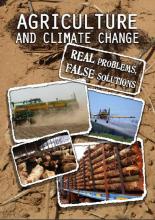Potential Ecological and Social Impacts of Genetically Engineered Trees
It is the purpose of the Convention on Biological Diversity to protect biological diversity in all of its richness – this is also done in awareness of its importance for the functioning of vital systems such as ecosystems, climate systems and water systems. Forests include some of the world’s most important biodiversity reserves with some forest soils alone containing thousands of species. Many of these species are endemic to particular ecosystems and the fragmenting of forest ecosystems has left these species highly vulnerable to new threats. It is therefore crucial that the CBD address emerging issues such as genetically engineered (modified) trees with an eye to ensuring that forest biological diversity is in no way negatively affected.

